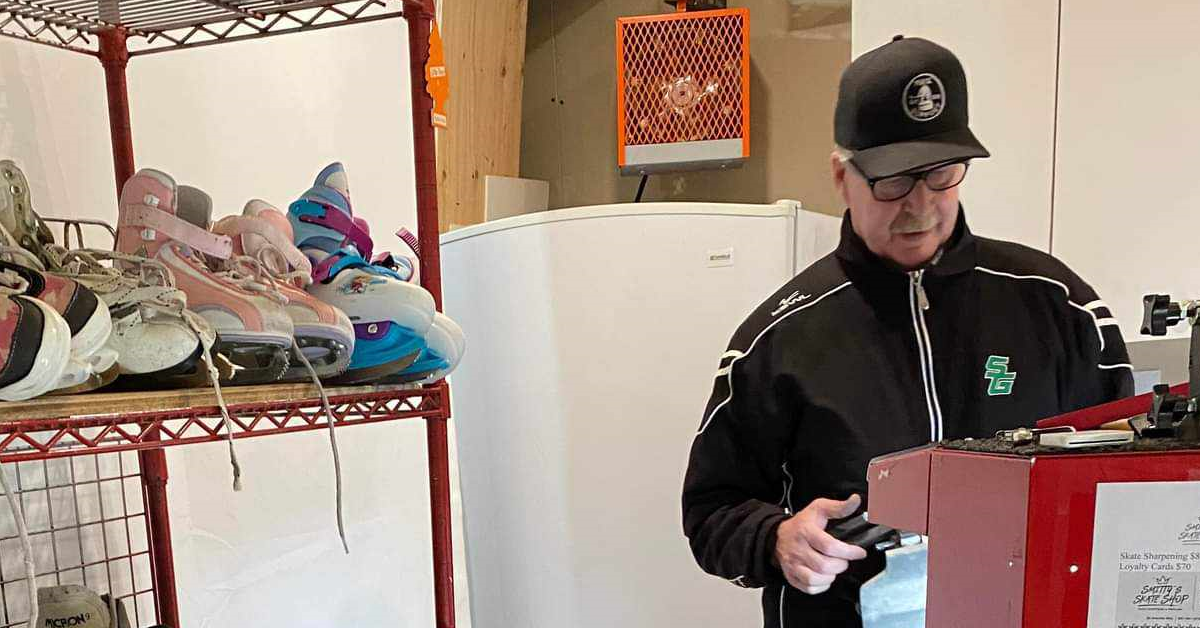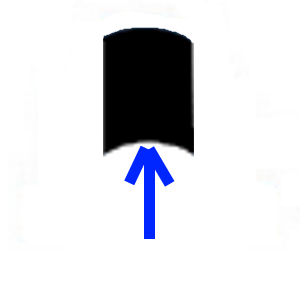Which Radius of Hollow Should You Choose?
I’m excited that my long time friend and hockey equipment specialist, David Carlson, returns this month to discuss the matter of “choosing the right skate radius and hollow”…
~Dennis C

David W Carlson
Choosing the best blade hollow. Which Radius of Hollow should you choose?
The simple answer is: whichever one feels best.
There’s a caveat, however. Regular blade profiling complements the “correct” hollow. Sometimes at the shop, a customer will say: “I want them a little sharper.” What they are saying is that they want more “bite” in the ice. When I get this request, I look at how much blade-to-ice they have. If it’s less than a 7 foot or 1.5 inches, that is most likely the reason why they want a “deeper” hollow.
Which radius is used depends on many factors, including the size of the player, strength and conditioning, hardness of the ice and skating style.
Kids and smaller players typically use 3/8” to 1/2” radius, while the most common radius in the NHL is 1/2”, the next most common is 5/8”, but there are as many variations as there are players.

Examples of Preferences:
Wayne Gretzky – 1/2″
Sidney Crosby – 9/16″
Joe Sakic – 5/8″
Evgeni Malkin – 1/2″
Chris Pronger – 7/8″
Jordan Staal – 5/8″
Mark Messier – 1″
Sergei Gonchar – 1″
Paul Coffey – 1 to 2″
These are only general guides, there is no set rule for choosing the radius of the hollow or the profile, it depends entirely on how it feels for the player, and may change as the skater’s skills improve or as they grow or change their technique.
When choosing the radius of hollow it is a trade-off between speed and agility, the larger the radius the more speed and a loss of ‘traction’, the smaller the radius the more agility, but a loss in speed and increased effort.
Similarly when choosing the radius for the profile it is a trade-off, larger radii increase balance glide and speed, smaller radii increase agility and maneuvering.
Typically children can learn new techniques on a ½” radius, which gives them little edge for sharp cornering due to their light weight, but is more forgiving for stops and pivots, far less likely to catch an edge resulting in a fall, and also allows them to work a little less and go a little faster, getting the feel for the glide portion of their stride and smooth extensions.
As they progress in technique and their ankle strength increases or edge control improves they may want to move to a smaller radius which gives them more of an edge for hard corners and acceleration. Then as they grow and gain weight they will probably see benefits from increasing the radius to 5/8ths, again, and for certain players, large with smooth strides and straight rushes, even to 5/8” or greater, giving them additional speed and more effortless gliding.
When changing from this small radius to a larger one it may feel like the skates are not sharp at first, but they are indeed sharp no matter what radius is used, they have a different angle on the edge and it will take a while to grow accustomed to it, the question is not whether they are sharp, rather, if the radius suitable for the players needs.
Similarly children may progress faster with a larger radius of profile too, as it increases their balance and stability.
I have several sharpening charts from a few European National Teams: Sweden and Finland. Most of the players except the goalies use 5/8ths or higher eg. 7/8ths.